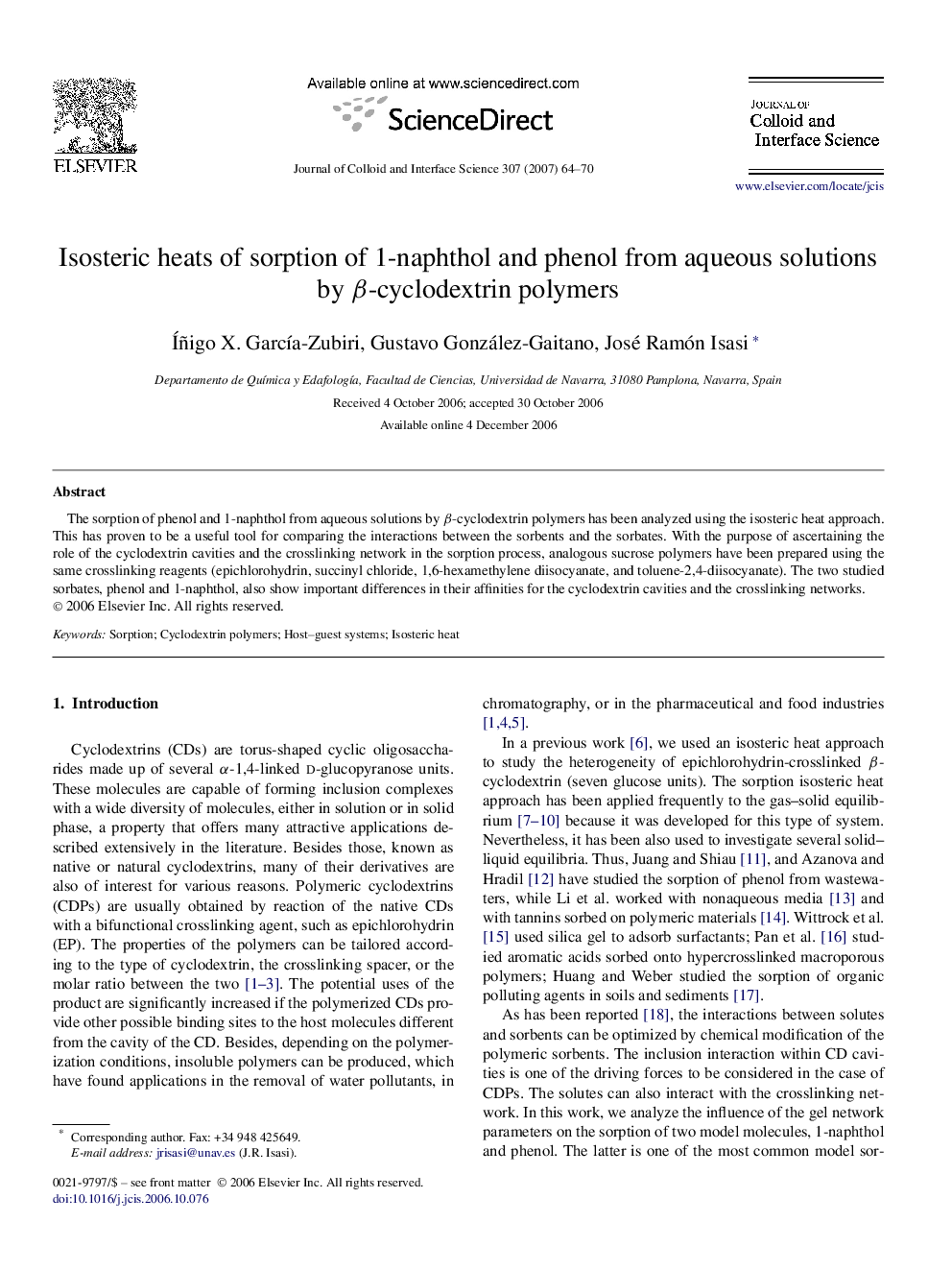| Article ID | Journal | Published Year | Pages | File Type |
|---|---|---|---|---|
| 612515 | Journal of Colloid and Interface Science | 2007 | 7 Pages |
The sorption of phenol and 1-naphthol from aqueous solutions by β-cyclodextrin polymers has been analyzed using the isosteric heat approach. This has proven to be a useful tool for comparing the interactions between the sorbents and the sorbates. With the purpose of ascertaining the role of the cyclodextrin cavities and the crosslinking network in the sorption process, analogous sucrose polymers have been prepared using the same crosslinking reagents (epichlorohydrin, succinyl chloride, 1,6-hexamethylene diisocyanate, and toluene-2,4-diisocyanate). The two studied sorbates, phenol and 1-naphthol, also show important differences in their affinities for the cyclodextrin cavities and the crosslinking networks.
Graphical abstractTwo different mechanisms of sorption (inclusion complexation within cyclodextrin cavities and interaction with the polymeric networks) can be analyzed using the isosteric heat approach.Figure optionsDownload full-size imageDownload as PowerPoint slide
